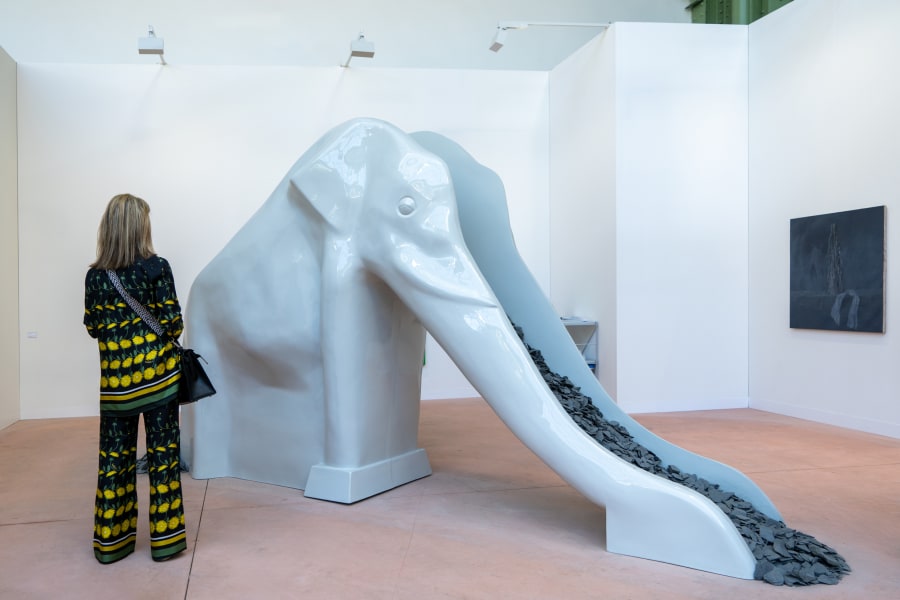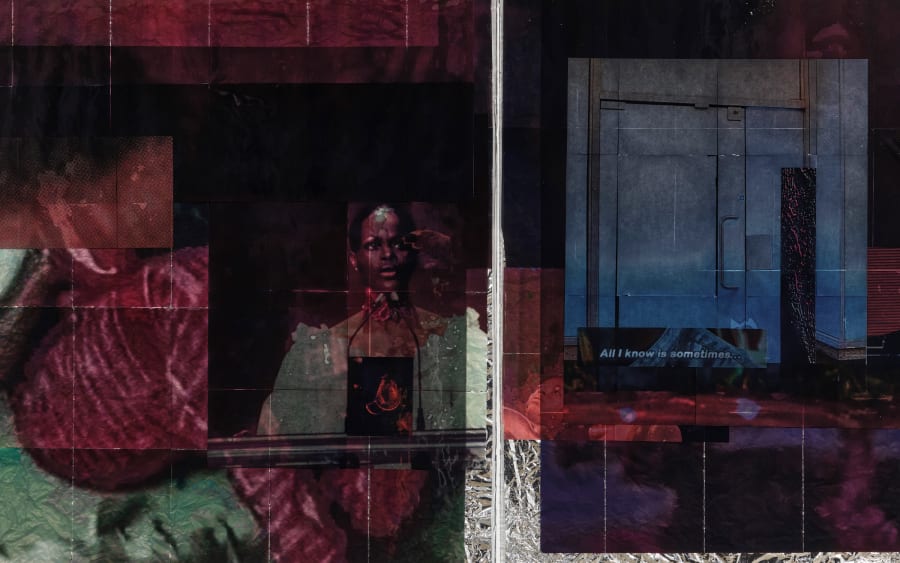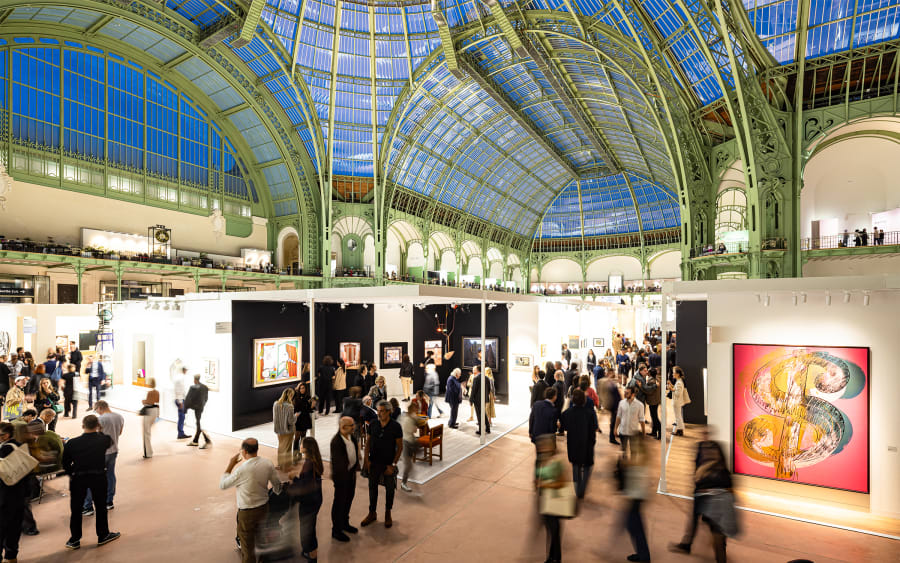Have you ever wondered what lengths dealers have gone to make a sale, the trends they secretly hate, or the hard-earned lessons they’d spare their younger counterparts? Ahead of Art Basel in Basel, we sought out the answers of three veteran gallerists – Pamela Echeverría of Mexico City’s Labor, Cornelia Grassi of London’s greengrassi, and Jeffrey Deitch, whose eponymous gallery has outposts in New York and Los Angeles – and posed a few of the questions we’ve always wanted to ask.
What are some of the greatest lengths you’ve gone to in order to close a deal?
Cornelia Grassi: You don’t want people to go home and think, ‘Oh God, I was forced to buy that.’ What you really, really want is for people to buy what they like. The question is how to stay cool when somebody says they want to buy something, but then they don’t get back to you about it. This is happening to us more and more at fairs.
Jeffrey Deitch: Sometimes collectors need reassurance: they might want major scholars in the field to weigh in on [a work], so you connect them with a third party, or you might send a third party to cross their path. Line up a number of art historians: Do your client a favor so they’ll do you a favor.
Pamela Echeverría: The most revealing conversation I had about a deal wasn’t one I closed on, but one I proudly walked away from. During Art Basel in Basel in 2014 I was showing Jorge Satorre’s installation in the Statements section. The work is a carefully conceived dialogue between objects that forms something greater than the sum of its parts. A collector proposed buying it on condition that, if the installation didn’t reach the market value they expected it to in ten years, I would grant them written permission to dismantle it and sell the pieces separately. They say you can’t avoid such people in our world, but I believe our job isn’t to sidestep difficult conversations, it’s to debate, persuade, or just know when to walk away. That same installation was later acquired by the Centre national des arts plastiques in Paris.
When heading to Art Basel in Basel, what do you look forward to that you won’t experience at other editions of the fair?
PE: I look forward to the simple pleasures that define the city: sharing sausages and beer with friends by the Rhine; organizing a picnic near Le Corbusier’s Chapel at Ronchamp; solitary night walks along the river, where inspiration flows as steadily as the water.
CG: Basel is a place that’s relatively contained, which allows for repeat visits. It’s such a fantastic thing to see people five days in a row.
JD: Basel is a wonderful place. I’ve been at least 50 times. Every year, I look forward to the exhibitions and, unlike those art dealers who are only at the fair on opening day – and who might not even come back after lunch – I’m there for the whole run.
Conversely, what are you not looking forward to in Basel? Is there anything you don’t like?
PE: I’ve occasionally had to face attitudes from visitors that remind us how much work remains in opening hearts as well as galleries. But I choose to focus on the kindness that drowns out any discord.
CG: I’ve seen every fair since 1988. There’s nothing I dislike about it.
JD: When I left Citibank and went into my own business, I lost my room at the Hotel Les Trois Rois to a former colleague. I wasn’t able to find another good hotel in Basel for many years.
Are trends to be followed or resisted?
PE: Trends have always struck me as curious phenomena. By the time I notice them, they’re often already dissolving into memory. Sometimes, what appears trendy today is simply the universe finally catching up with what visionary artists have always known.
CG: The trend should be your own personal trend. The most interesting collections are where you have to ask, ‘Who made that?’ because it’s not immediately clear.
JD: What makes trends so interesting is understanding them. To understand what visual artists are doing, you have to have a broad sense of culture past and present. You’ve got to read exciting new fiction, to see movies. That’s why, at 72 years old, I still go to Coachella.
Are there any recent trends that you dislike?
PE: If I had to identify what I resist, it would be the very idea that art should follow trends rather than create them.
CG: What’s interesting is seeing which trends have been facilitated by small screens – a certain kind of figuration, for example – and how things that don’t work on small screens have been completely obliterated. It’s very hard to look at certain sculpture on small screens, and you can’t look at film.
JD: Some people would answer, ‘the art market,’ and they might be right. Obviously, I use the art market as a structure to promote the art I’m interested in. But you have to resist the financialization of making art that’s just for art fairs or easily stored for investors. Compared to the kind of art that I surrounded myself with in the 1970s, art is not as radical as it once was.
Can you tell us about a time you made a snap judgment about a potential client that turned out to be wrong or regrettable?
CG: All the time. This is what’s so interesting about the job. Somebody who you think you can really trust might ghost you, while somebody who seems really abrasive and kind of unappealing might turn out to be fantastic. And then that can turn around again. You shouldn’t count on one person sustaining your business forever but, if you’ve had a good exchange with someone, treasure it without being too dramatic.
JD: I started out at a time when almost every collector was older than 50, most of them older than 60. So, when we began showing artists like Barry McGee in the 1990s, that was a revelation: young people would glide into the gallery on their skateboards, and it turned out they were buyers. That really changed the constituency. I learned early on that collectors are not necessarily people wearing tailored suits and ties who are interested in art beyond anything else. Now, a number are coming through digital collecting.
PE: I’ve learned that first impressions in this industry are about as reliable as weather forecasts: sometimes brilliantly accurate, sometimes spectacularly off the mark. The beauty of proper discernment is that it allows genuine connections to flourish. The art world is delightfully small, after all.
What difficult lessons have you learned that you’d like to spare younger gallerists, or popular misconceptions about the industry that you’d like to dispel?
PE: Protect your own spirit while championing others. When you protect your own well-being, you create better conditions for everyone to flourish.
JD: Your relationships with colleagues are very important. For galleries that share artists, generously introduce clients. The right model is coming together, rather than competing.
CG: Don’t take on too many artists too quickly, and make sure you are interested in them for reasons beyond conventional success. There’s this feeling that collectors should be making money on what’s expected to be a good investment, but buying, in my opinion, is supporting someone who you think is interesting so that they can make the next thing. You should be fascinated by both their work and their process, and how that will evolve in five, ten, 15 years’ time.
Janelle Zara is a freelance writer specializing in art and architecture. She is the author of Masters at Work: Becoming an Architect (2019). She currently lives in Los Angeles
Top image: Jeffrey Deitch's booth at Art Basel in Basel 2021.


